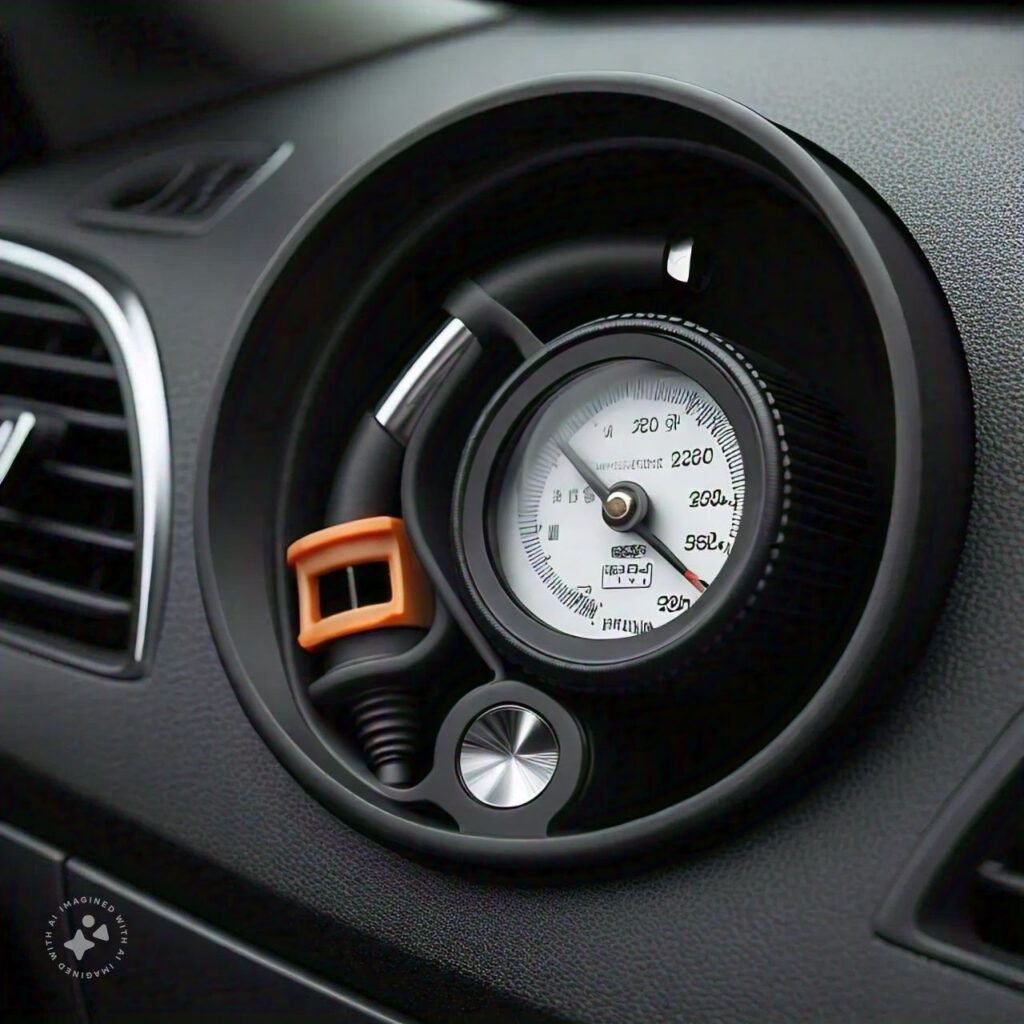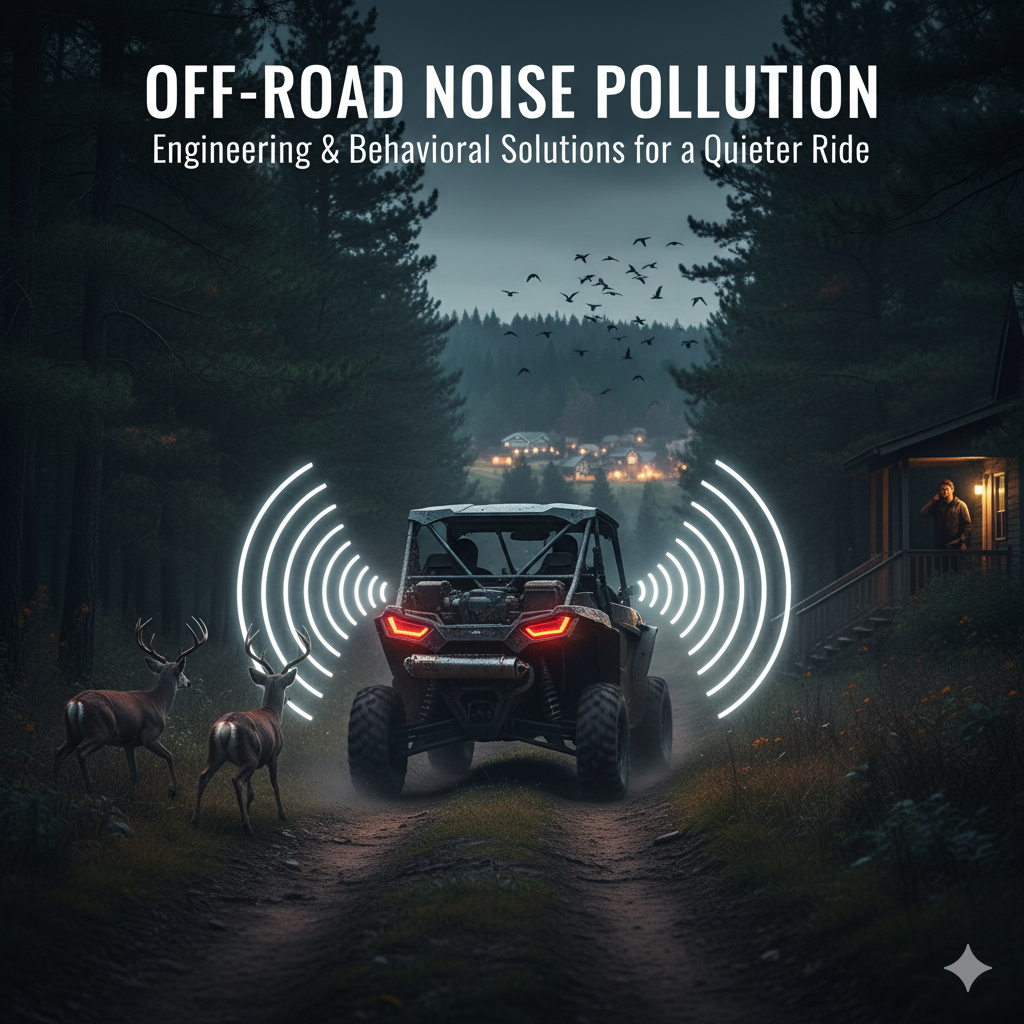When it comes to off-roading adventures, having the right air pressure in your ATV wheels is crucial.
The air pressure directly affects the performance, handling, and overall safety of your ATV.
Whether you’re tackling rocky terrains or cruising through muddy trails, maintaining the correct air pressure can make all the difference.
The Dangers of Under inflated ATV Wheels
One of the most common mistakes ATV owners make is running their wheels with low air pressure.
Under inflated ATV wheels can lead to a myriad of problems, including:
- Decreased Stability: When the air pressure is too low, the sidewalls of the tires flex more, causing instability. This can make your ATV more prone to tipping over, especially when navigating uneven terrain.
- Poor Handling: Low air pressure affects the ATV’s handling, making it more difficult to steer and control. This can be particularly dangerous when maneuvering through tight corners or trying to avoid obstacles.
- Increased Tire Wear: Underinflated tires wear out faster and unevenly. The lack of proper air pressure puts excessive stress on the sidewalls and tread, leading to premature wear and tear.
- Reduced Fuel Efficiency: When your ATV wheels are underinflated, it requires more power and fuel to move. This can significantly decrease your ATV’s fuel efficiency, resulting in more frequent refueling stops.
- Higher Risk of Tire Failure: Underinflated tires are more susceptible to punctures, blowouts, and other tire failures. The lack of proper air pressure weakens the tire’s structure, making it more prone to damage.
The Risks of Overinflated ATV Wheels
On the other hand, overinflating your ATV wheels can also have negative consequences.

Some of the risks associated with overinflated ATV wheels include:
- Reduced Traction: Overinflated tires have a smaller contact patch with the ground, resulting in reduced traction. This can make it difficult to maintain control, especially on slippery or loose surfaces.
- Harsh Ride: Excessive air pressure makes the ride feel harsher, as the tires are less able to absorb shocks and vibrations. This can lead to a less comfortable riding experience and increased fatigue.
- Uneven Wear: Overinflated tires tend to wear out more in the center, as the tread is not making full contact with the ground. This uneven wear pattern can reduce the lifespan of your ATV tires.
- Increased Risk of Damage: Overinflated tires are more susceptible to impact damage, as they have less flexibility to absorb shocks. This can result in sidewall bulges, cuts, or even tire blowouts.
Recommended Air Pressure for Different ATV Wheels
The recommended air pressure for ATV wheels can vary depending on the make, model, and tire size of your ATV.
It’s essential to consult your ATV’s owner’s manual or the tire manufacturer’s guidelines for the specific recommended air pressure.
However, as a general guideline, here are the recommended air pressure ranges for different ATV wheel sizes:
1. 8 – Inch ATV Wheels:
For ATV wheels with an 8-inch diameter, the recommended air pressure typically ranges from 5 to 7 PSI (pounds per square inch).
This range provides a good balance between stability, traction, and comfort.
2. 9-Inch ATV Wheels:
ATV wheels with a 9-inch diameter usually require slightly higher air pressure.
The recommended range for 9-inch ATV wheels is typically between 6 and 8 PSI.
3. 10-Inch ATV Wheels:
For ATV wheels with a 10-inch diameter, the recommended air pressure ranges from 7 to 10 PSI.
The larger wheel size allows for higher air pressure, providing better stability and load-carrying capacity.
4. 12-Inch ATV Wheels:
ATV wheels with a 12-inch diameter often require higher air pressure compared to smaller wheel sizes.
The recommended range for 12-inch ATV wheels is typically between 8 and 12 PSI.
5. 14-Inch ATV Wheels:
For ATV wheels with a 14-inch diameter, the recommended air pressure ranges from 10 to 14 PSI.
The larger wheel size and higher air pressure provide enhanced stability and performance, especially for heavier ATVs.
Remember, these are general guidelines, and it’s crucial to refer to your ATV’s owner’s manual or the tire manufacturer’s recommendations for the specific air pressure requirements of your ATV wheels.
Tips for Checking and Maintaining ATV Wheel Air Pressure
Now that you understand the importance of proper air pressure in your ATV wheels let’s discuss some tips for checking and maintaining the air pressure:
- Use a Reliable Tire Pressure Gauge: Invest in a good-quality tire pressure gauge to ensure accurate readings. Digital or analog gauges are both suitable options, as long as they provide consistent results.
- Check the Air Pressure Regularly: Make it a habit to check your ATV wheel air pressure before each ride or at least once a month, especially if your ATV has been sitting idle for an extended period.
- Check the Air Pressure When Tires are Cold: Air pressure increases as the tires heat up during riding. To get accurate readings, check the air pressure when the tires are cold.
- Add or Release Air as Needed: If the air pressure is too low, use an air compressor to add air until it reaches the recommended level. If it’s too high, release air using the tire valve stem.
- Inspect for Damage: While checking the air pressure, take the opportunity to inspect your ATV tires for any signs of damage, such as cuts, bulges, or punctures. Replace any damaged tires immediately.
- Consider the Riding Conditions: Adjust the air pressure based on the terrain and riding conditions. Lower air pressure provides better traction in soft or muddy terrains, while higher air pressure is suitable for harder surfaces.
- Replace Worn-Out Tires: Monitor the tread depth of your ATV tires and replace them when they become excessively worn. Worn-out tires have reduced traction and are more prone to failures.
Conclusion
Proper air pressure in your ATV wheels is vital for optimal performance, handling, and safety.
Under inflated or overinflated tires can lead to various issues, including decreased stability, poor handling, increased tire wear, and reduced fuel efficiency.
It’s essential to follow the recommended air pressure guidelines provided by your ATV’s manufacturer or tire manufacturer.
Regularly check and maintain the air pressure in your ATV wheels using a reliable tire pressure gauge.
Adjust the air pressure based on the riding conditions and always replace worn-out or damaged tires promptly.
By taking these precautions, you can enjoy a smoother, safer, and more enjoyable off-roading experience with your ATV.




